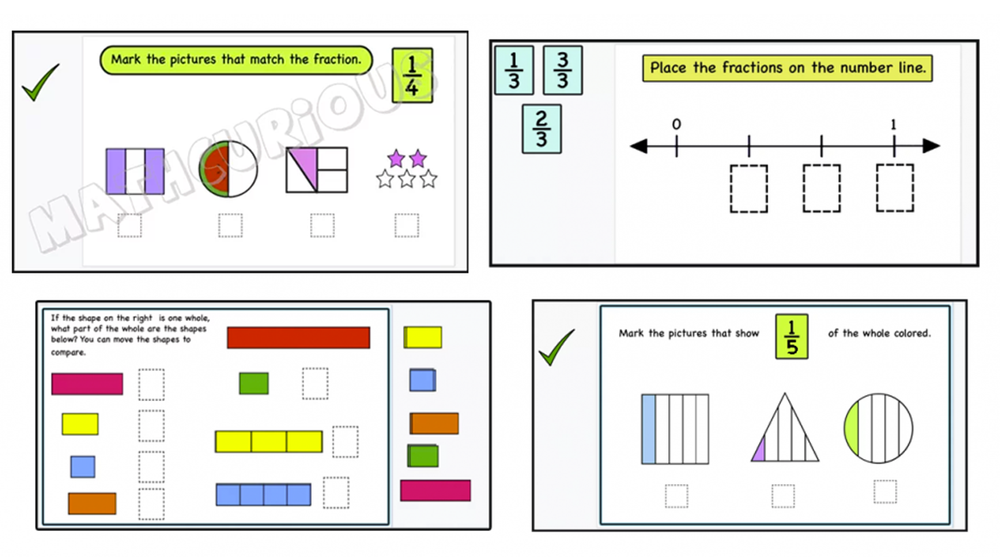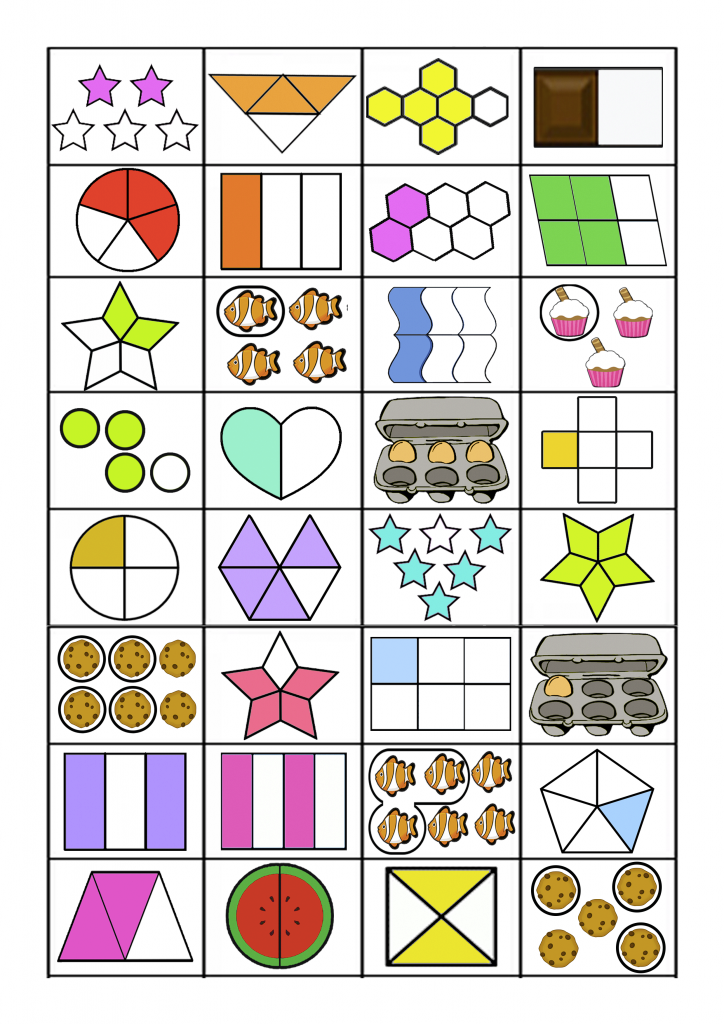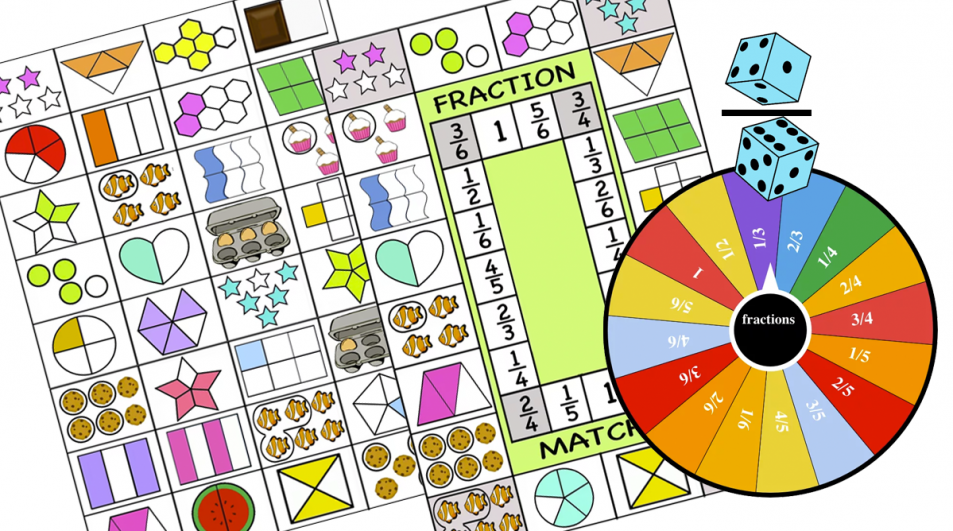In today’s post, I would like to share some simple games for the introduction level of fractions. The game boards have simple visuals to help students recognize different fractions, and match equivalent ones. We have shared some games with visuals to practice completing one and matching equivalent fractions before, however, today’s games are simpler and include different ways of representing different fractions with numbers up to 6. The games come in print and digital (Google Slides version) and they are an extension to the Introducing Fractions Activity cards resource below.

Game 1- Fractions 4

This is a simple and quick four-in-a-row game and the goal is to mark four tiles in a row horizontally, vertically, or diagonally. The players roll two 6-face dice or use the spinner to get a proper fraction. If you are using the dice use the smaller number as the numerator. Once the players get the fraction they find it and mark it on the board. The fractions repeat and the players can also mark the equivalent ones. They try to make four in a row and stop the other players from doing so.

The board can be used for other activities such as matching the same fractions, matching equivalent ones, and more.
Game 2- Fraction Match

For this game, you need 6-face dice and two place markers for each player. The players place their markers one in any grey tile in the number path and one in any grey/corner tile in the picture path. Each turn the players roll twice. Once for moving their marker in the number path and once for moving around the picture path. They can move in any direction. The goal is to land their markers on matching fractions (pictures and numbers). They can use equivalent fractions as well. For example, 1/2 can match with the 2/4 picture. The first player to get a matching pair is the winner. The Google Slides version uses a spinner instead of a dice.

As you may have noticed the spinner in game 1 and the number path in game 2 include all fractions even the equivalent ones that I could have skipped (like in the previous games). The reason is that these games are for younger students and for the introduction level when we want the students to discover equivalence and say the names of more of the fractions to learn them.
Bingo games are always a favorite among my students. I have created some fractions pictures bingo cards and you can find them below. Use the spinner from game 1 or roll two 6-face dice and form proper fractions. We do lines horizontally and diagonally, once each and full house. There are 20 different cards but the fractions repeat and you can include equivalent so you will get more than one winner each time.

There are two different memory games. You can use numbers and try to match them with the fractions pictures or match two different pictures that show the same fractions. I print them on card stock that has a color on one side and white on the other, different for each page so that the groups (numbers, pictures) have different colors.
Find the print and Google Slides version of the games here
I hope you find these activities useful

